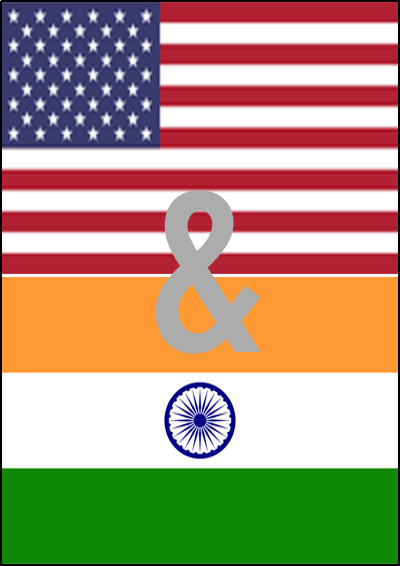Modi and Obama: A Study in Parallels
Obama’s case in the U.S. suggests caution is warranted regarding the current hype about India’s one-man show.
September 29, 2014

It’s a rare moment in global politics when the political dynamics of India, the world’s largest democracy, mimic those of the United States. But here we are: Narendra Modi, India’s new prime minister, entered office with the same sense of excitement and boundless expectation as Barack Obama when he was elected the 44th President of the United States back in 2008.
Both elections were labeled historic. In the U.S. case, it was the arrival of the first black man in the nation’s highest office. In India’s case, it is about having somebody from truly humble roots as prime minister.
Mr. Modi has had a good start in office. He is going about reforming India in a methodical, yet determined manner. There surely is a lot to clean up in India, quite literally so, if one thinks of the prime minister’s own commitment to do away with defecating in public and ensuring there are enough toilets in the country.
Readying the world’s soon-to-be most populous nation for a brighter economic future is a matter of sheer survival for India. The echo effect of its much advertised demographic dividend is a tremendous need to create meaningful employment for all the masses of young people entering India’s labor force every year.
While everyone can only wish Mr. Modi the best for his tenure in office, whenever one deals with bouts of hype, as is the case with him, caution is well advised. In the United States, it was Oprah Winfrey, the talk show host, who famously referred to Obama as “the one.”
The fact that by now all but the most ardent supporters of Mr. Obama are quite disappointed — and certainly no longer believe in his “chosenness” — contains an important message for today’s India. The odds are that the “dream” is not going to come to pass.
Reasons for hope
After years, if not decades, of punting on important reforms by the previous Congress-led government, a can-do politician like Mr. Modi is sorely needed.
India is not just stuck with insufficient job creation for the young, but also an outdated infrastructure, a stagnating manufacturing sector, heavy doses of crony capitalism and a host of environmental issues, such as a dearth of water.
(Transferred to a different level of economic development, this list of ills isn’t so Indian after all; the U.S. faces several of the same challenges.)
Indian businesses are excited. They have pumped vast amounts of money into the Modi campaign, hoping that he will bring deliverance on the many trouble-laden issues described above.
And even though receiving overwhelming business support across all sectors of industry is the one big difference between Messrs. Modi and Obama, there are some important parallels to ponder in the political set-up of India and the United States.
Reasons for caution
Modi obviously benefits from the fact that he is a far more experienced administrator and political wheeler/dealer than Obama ever was and will be.
And yet, even though he won an impressive absolute majority in India’s national parliament, it is unlikely that the other political forces – while still in some shock — are simply going to roll over.
They will be driven by one simple insight: Modi may have received a 51% majority in the lower house, but he only received a total of 31% of the votes cast. There are also the manifold regional interests all across India.
For Modi, the obstacles don’t just include India’s upper house, in which he lacks the votes for the implementation of key legislative measures — and the consent of which is needed for passage.
The one key stumbling block where India is very much the same as the United States is that both countries have fiendishly complex political systems, with vested interests that are deeply entrenched, if at all movable.
In addition, individual states can — and will — easily assert their will, which can quickly stop any thoughts of a national agenda in its tracks.
It is important to recognize the belief in the near-magical powers of a single man (or woman) for what it really is: It is first and foremost a direct reflection of the underlying complexity of the political system as such.
The only way out of such a profound, homemade morass seems to be the belief that a savior is nigh. Immature as that belief may be, that thinking is certainly comprehensible — it offers concrete, personified hope to escape from the present conundrum.
A man vs. a monumental task
However, as the Obama case proved, converting hope into an effective political strategy is practically impossible. A people that is ultimately set in its tracks on being “disunited” is hard to manage in any efficient and integrated way.
For these reasons, it would be a miracle if Mr. Modi indeed managed to transcend that profound challenge and unite his country via his person. For India’s and the world’s sake, one must certainly hope for that, but better not expect it.
Editor’s note: This essay, originally published on The Globalist as “Modi: He’s the One! Or Is He?” on May 26, 2014, has been updated by the author to reflect recent events.
Takeaways
The Obama case suggests caution is warranted in the face of the current hype about Modi – India’s one-man show.
One can certainly hope for Modi to transcend India’s challenges, but might be better off not to expect it.
Centrifugal forces in India could work against Modi -- as they did Obama in America.
Modi – like Obama – will find converting hope into an effective political strategy is practically impossible.
Modi faces no bigger a stumbling block than the incredible expectations of the Indian people.

